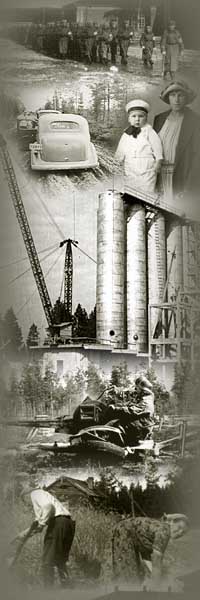 |
 |
|
Summary:
Eero Jarva, A Mordant Etruscan Demon in the Tomb Paintings at Sarteano (Italy)
In autumn 2003 an interesting Etruscan tomb decorated with paintings was discovered at Sarteano
in central Italy, near the ancient Etruscan city of Clevsin (also Camars), better known by its
Latin name Clusium. The colours of the paintings are preserved unusually well, the most exceptional
feature being a red-haired driver of a chariot drawn by four animals, after which the tomb has been
named ”The Tomb of the Infernal Quadriga” (La Tomba della Quadriga Infernale).
A long corridor (dromos) leads down to the tomb where the chariot driver painting is first on the left
(Fig. 1). The driver is wearing a red dress, has white skin and is endowed with a curved canine tooth sticking
out from the lower jaw in an ostentatious way and an especially big eye that has been portrayed as if seen
from the front (Fig. 2). Two lions and two griffins draw the chariot and in front of them are the remains of
a winged male figure. After the driver two men are seen on a banquet bed (kline) on the right side of which
there is a standing male servant (Fig. 3). In the main room on the left there is a three-headed snake (Fig. 4)
and in the rear gable there is a seahorse (hippokampos) (Fig. 5).
These paintings reflect the way the Etruscans, and more generally people of ancient history, described
what happens after death, a feature very common from the 4th century BC onwards, often containing familiar
elements from Greek mythology. The banquet scene clearly has a central role in the decoration of the tomb.
The representation of two men in an obvious homoerotic context is not usual in Etruscan art. This possibly
explains why the painter hesitated and made several sketches before deciding the final solution. But still
more exceptional is the scene of the quadriga driver whom I recognize as a female figure, whereas Alessandra
Minetti is prone to see Charun despite the light skin of the figure and the absence of the typical attributes,
the hammer and the donkey ears. The female interpretation leads us into another problem: who is she? A common
female figure in the Etruscan tomb paintings is Vanth who is mostly represented as a young, beautiful woman,
often bare breasted and winged, carrying a torch (Fig. 6). A closer parallel, also noted by Minetti, for the
seemingly angry chariot driver can be found in a female demon named Nathum engraved on an Etruscan bronze
mirror in a scene representing the killing of Clytemnestra by Orestes (Fig. 7): the figure holds snakes in
her hands, her hair is driven by wind like that of the Sarteano driver and she also has a canine tooth sticking
out of her lower jaw. It is logical to see here Nathum as a female Avenger, Greek Erinys, Latin Furia, figure.
However, this is not enough evidence to label the chariot driver expressly as Nathum, but its manic appearance
favours an interpretation of it as one of Erinyes/Furiae, which were called also Eumenids or Maniae. A further
question is what was the reason for the chariot driver’s anger? Is this to be inferred from the banquet scene?
Faravid
31/2007
|
 |